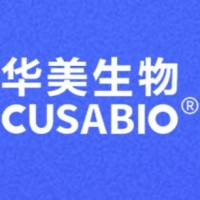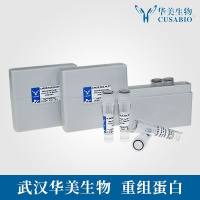Assembly of Nucleosomal Templates by Salt Dialysis
互联网
- Abstract
- Table of Contents
- Materials
- Figures
- Literature Cited
Abstract
Because it is convenient to assemble nucleosomal templates through salt dialysis, large amounts of chromatin complexes can be made easily and in a short amount of time. This unit includes instructions for the various salt dialysis schemes (step versus gradient), which are accompanied by protocols for purification of core histones from bacteria and preparation of DNA for the nucleosomal arrays. Electrophoretic procedures to analyze the reconstituted complexes are also included.
Table of Contents
- Strategic Planning
- Basic Protocol 1: Assembly of Nucleosomal Templates by Step Salt Dialysis
- Basic Protocol 2: Assembly of High Concentration of Mononucleosomes by Gradient Salt Dialysis
- Basic Protocol 3: Assembly of Nucleosomal Arrays by Gradient Salt Dialysis
- Support Protocol 1: Purification of Recombinant Core Histones from Bacteria
- Support Protocol 2: Preparation of Single 5′ End‐Labeled DNA for Mononucleosome Assembly
- Support Protocol 3: Preparation of DNA for Assembly of High Concentration Unlabeled Mononucleosomes
- Support Protocol 4: Preparation of DNA for Nucleosomal Arrays
- Support Protocol 5: Analysis of Reconstituted Complexes by Agarose Gel Electrophoresis
- Support Protocol 6: Analysis of Reconstituted Complexes by Polyacrylamide Gel Electrophoresis
- Support Protocol 7: EcoRI Digestion to Determine Extent of G5E4 Array Assembly
- Reagents and Solutions
- Commentary
- Literature Cited
- Figures
- Tables
Materials
Basic Protocol 1: Assembly of Nucleosomal Templates by Step Salt Dialysis
Materials
Basic Protocol 2: Assembly of High Concentration of Mononucleosomes by Gradient Salt Dialysis
Materials
Basic Protocol 3: Assembly of Nucleosomal Arrays by Gradient Salt Dialysis
Materials
Support Protocol 1: Purification of Recombinant Core Histones from Bacteria
Materials
Support Protocol 2: Preparation of Single 5′ End‐Labeled DNA for Mononucleosome Assembly
Materials
Support Protocol 3: Preparation of DNA for Assembly of High Concentration Unlabeled Mononucleosomes
Materials
Support Protocol 4: Preparation of DNA for Nucleosomal Arrays
Materials
Support Protocol 5: Analysis of Reconstituted Complexes by Agarose Gel Electrophoresis
Materials
Support Protocol 6: Analysis of Reconstituted Complexes by Polyacrylamide Gel Electrophoresis
Materials
|
Figures
-
Figure 21.6.1 Setup for gradient salt dialysis (adapted from Luger et al., ). View Image -
Figure 21.6.2 Gel retardation assay of reconstituted nucleosomes. View Image
Videos
Literature Cited
| Literature Cited | |
| Camerini‐Otero, R.D., Sollner‐Webb, B., and Felsenfeld, G. 1973. The organization of histones and DNA in chromatin: evidence for an arginine‐rich histone kernel. Cell 3:333‐347. | |
| Carruthers, L.M., Tse, C., Walker, K.P., and Hansen, J. 1999. Assembly of defined nucleosomal and chromatin arrays from pure components. Methods Enzymol. 304:19‐35. | |
| Hayes, J.J. and Lee, K.M. 1997. In vitro reconstitution and analysis of mononucleosomes containing defined DNAs and proteins. Methods 12:2‐9. | |
| Hayes, J.J., Tullius, T.D., and Wolffe, A.P. 1990. The structure of DNA in a nucleosome. Proc. Natl. Acad. Sci. U.S.A. 87:7405‐7409. | |
| Lee, K.M. and Hayes, J.J. 1997. The N‐terminal tail of histone H2A binds to two distinct sites within the nucleosome core. Proc. Natl. Acad. Sci. U.S.A. 94:8959‐8964. | |
| Lee, K.M., Chafin, D.R., and Hayes, J.J. 1999. Targeted cross‐linking and DNA cleavage within model chromatin complexes. Methods Enzymol. 304:231‐251. | |
| Luger, K., Rechsteiner, T.J., Flaus, A.J., Waye, M.M., and Richmond, T.J. 1997a. Characterization of nucleosome core particles containing histone protein made in bacteria. J. Mol. Biol. 272:301‐311. | |
| Luger, K., Mader, A.W., Richmond, R.K., Sargent, D.F., and Richmond, T.J. 1997b. Crystal structure of the nucleosome core particle at 2.8 Å resolution. Nature 389:251‐260. | |
| Luger, K., Rechsteiner, T.J., and Richmond, T.J. 1999. Preparation of nucleosome core particle from recombinant histones. Methods Enzymol. 304:3‐19. | |
| Neely, K.E., Hassan, A.H., Wallberg, A.E., Steger, D.J., Cairns, B.R., Wright, A.P. and Workman, J.L. 1999. Activation domain‐mediated targeting of the SWI/SNF complex to promoters stimulates transcription from nucleosome arrays. Mol. Cell. 4:649‐655. | |
| Rhodes, D. 1985. Structural analysis of a triple complex between the histone octamer, a Xenopus gene for 5S RNA and transcription factor IIIA. EMBO J. 4:3473‐3482. | |
| Schwarz, P.M. and Hansen, J.C. 1994. Formation and stability of higher order chromatin structures.contributions of the histone octamer. J. Biol. Chem. 269:16284‐16289. | |
| van Holde, K.E. 1989. Chromatin. Springer‐ Verlag, New York |








